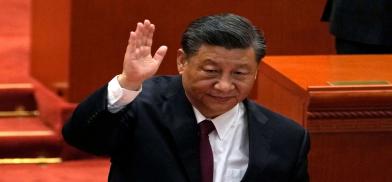China's cartographic brinkmanship amid its rising internal challenges will exacerbate Indo-Pacific tensions
India is increasingly being courted by the US-led West as a bulwark to Beijing, and China will want to send a two-pronged message to Delhi and Washington as well as regional neighbours that Beijing still holds the economic and security upper hand, although its economic credentials have taken a serious hit.

The 2023 China Standard Map has reasserted Beijing’s claim over India's Arunachal Pradesh, the Aksai Chin region, Taiwan, and the South China Sea, all of which remain disputed with the concerned countries. The timing of this release has invited new scrutiny in light of rising tensions in the region as a series of geopolitical events could put Beijing on the defensive and make it plot new pushback moves.
First, the recently approved USD500 million arms sales to Taiwan by the Biden administration has fuelled Beijing's angst, which has responded with the usual array of air and naval power intimidation and encirclement of the island. Taiwanese Vice President and presidential hopeful William Lai’s recent stopovers in New York and San Francisco, and his hardline approach to Taiwan’s relations with mainland China have added to the anger of Beijing.
Secondly, the release of the treated radioactive water from the stricken Fukushima Daiichi nuclear plant has been seized upon by China to discredit Japan amidst growing tensions in the South China Sea. While Beijing has gained ground in Southeast Asia in elevating its soft power narrative and hard power postures, it continues to receive diminishing acceptance from its eastern neighbours like Japan, the Philippines and South Korea. Beijing’s worst fear of a consolidated security pact is coming true, and the prospects of an expanded Camp David alliance of the US, Japan and South Korea have further hardened China's playbook.
Beijing's wariness and pushback
Thirdly, the upcoming G20 Summit in New Delhi - which President Xi Jinping is giving a miss - remains another platform seen by Beijing as forestalling its rise and interests. India is increasingly being courted by the US-led West as a bulwark to Beijing, and China will want to send a two-pronged message to Delhi and Washington as well as regional neighbours that Beijing still holds the economic and security upper hand in the region, although its economic credentials have taken a serious hit.
The openings for China’s consolidation of influence, including the coming G-77 event in Cuba and the recently concluded BRICS Summit in South Africa, whose grouping has now been expanded, are seen as crucial platforms for Beijing’s anti-West posturing.
The recent revelation by Meta that it had disrupted a disinformation campaign linked to Chinese law enforcement described as the largest known cross-platform covert influence operation in the world remains a case in point. The influence network generated positive posts about China, while also attempting to spread negative commentary about the US and disinformation in multiple languages about the origins of the Covid-19 pandemic, as reported by Meta.
Beijing's four-point strategy
This growing muscle-flexing by Beijing is based on a four-pronged strategy. First, the fast closing window and timeframe for Xi to execute his 'Chinese Dream' for Taiwan unification, with increased containment pressure and critical tech embargo by the West. This is worsened by Beijing's internal economic decline now threatening to derail future capacities in maintaining the potential of a protracted conflict with the West over Taiwan.
Second, the increasing counterforce capacities by the US in thwarting Chinese moves, with defence and security friend-shoring by Washington with Manila, Seoul, Tokyo, Hanoi, Delhi, Canberra and other regional players including Pacific Island states circumscribing Beijing's region power and influence.
Thirdly, the declining effectiveness of ASEAN and its conflict prevention mechanisms in showing a credible opposition to Beijing’s inroads will give a clearer path for Beijing to reassert its push and cement its divide-and-conquer approach.
Fourth, in shoring up the legitimacy of President Xi in his internal consolidation of power amidst new internal challenges. This is critical in laying the foundation of greater nationalistic sentiments and a sense of Chinese pride, in superseding the current systemic challenges of the demographic crisis, economic slowdown, property and debt crisis, and record unemployment among the youth.
(The author is a Kuala Lumpur-based strategic and security analyst. Views are personal. He can be contacted at collins@um.edu.my)









Post a Comment